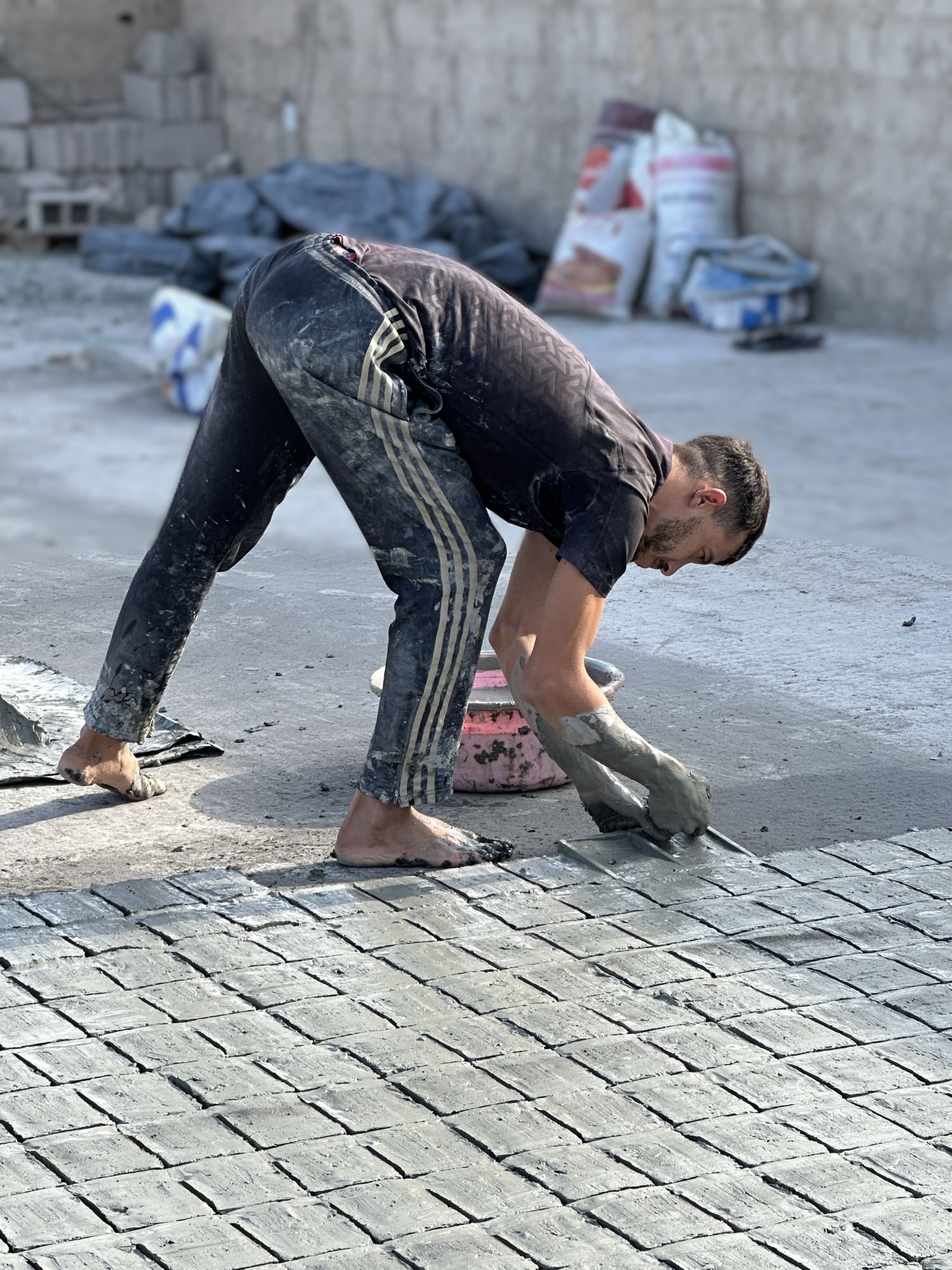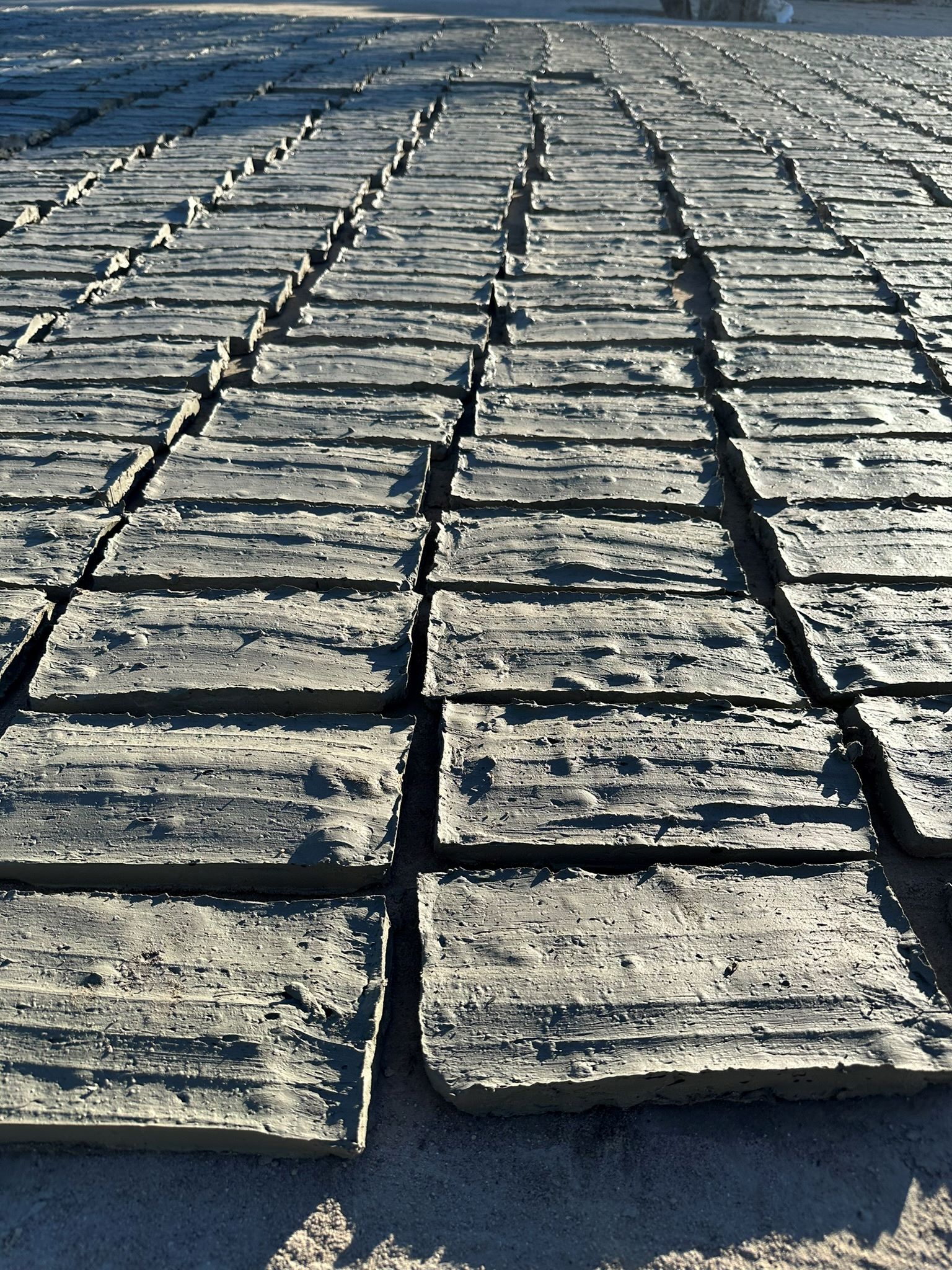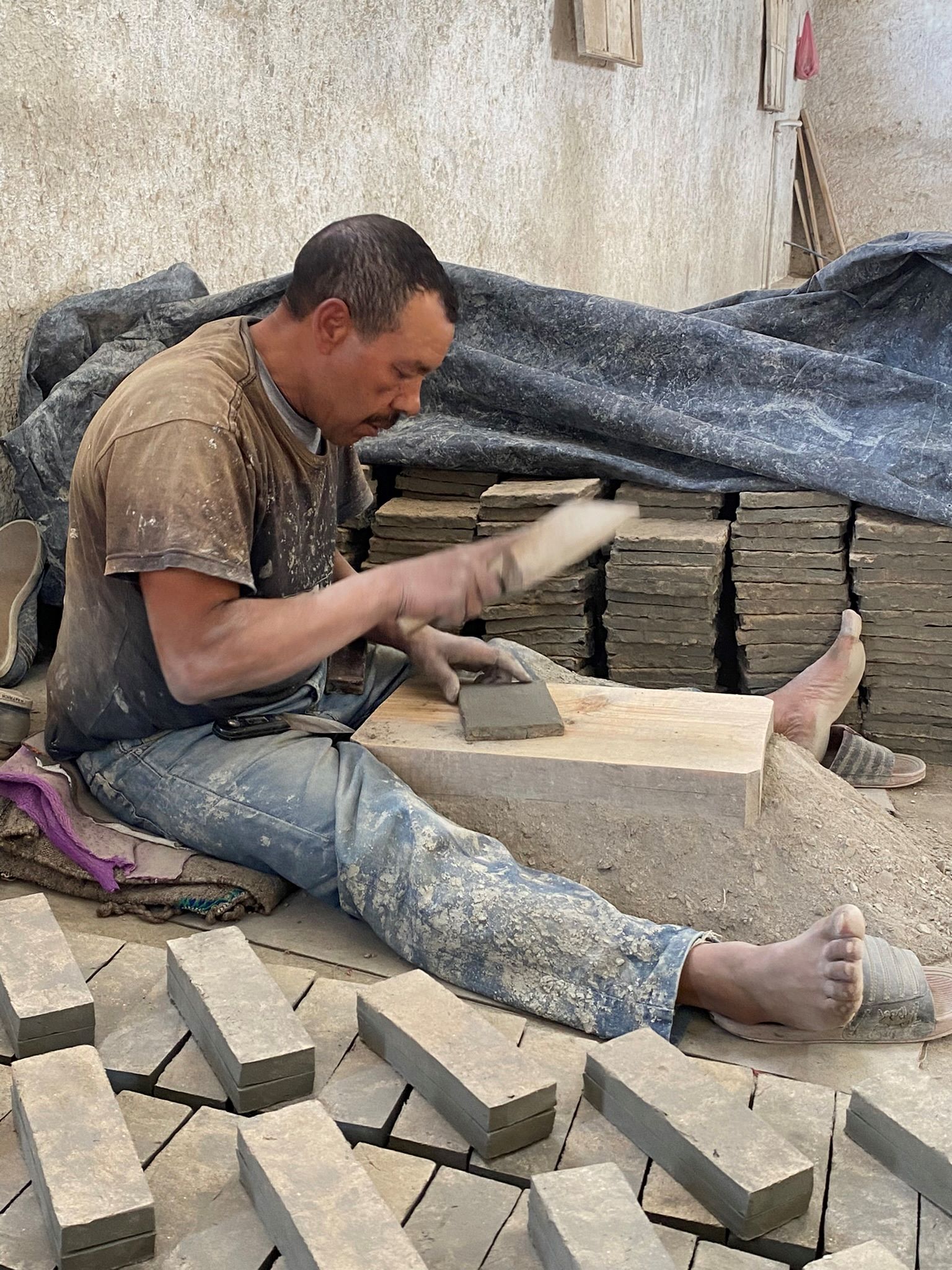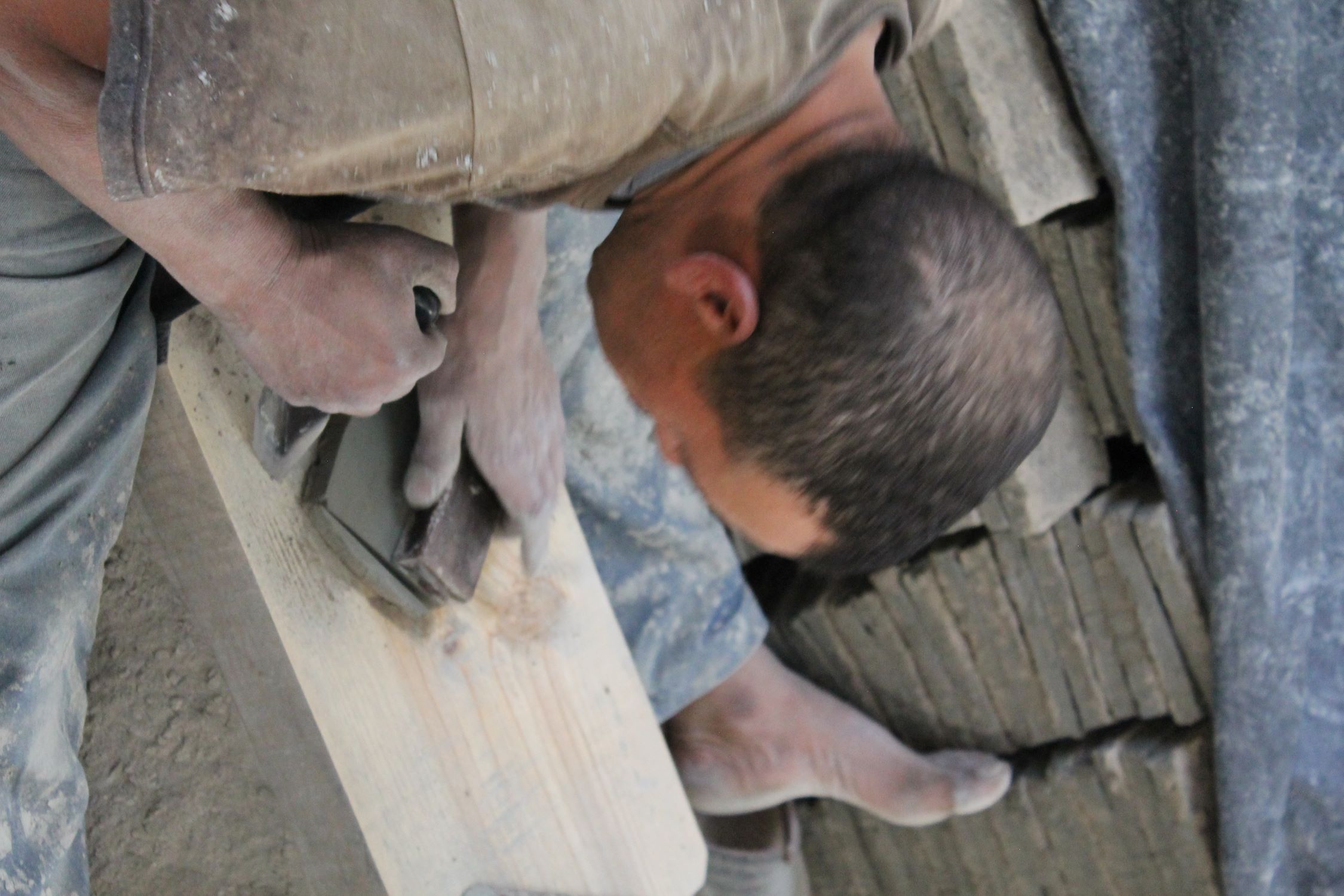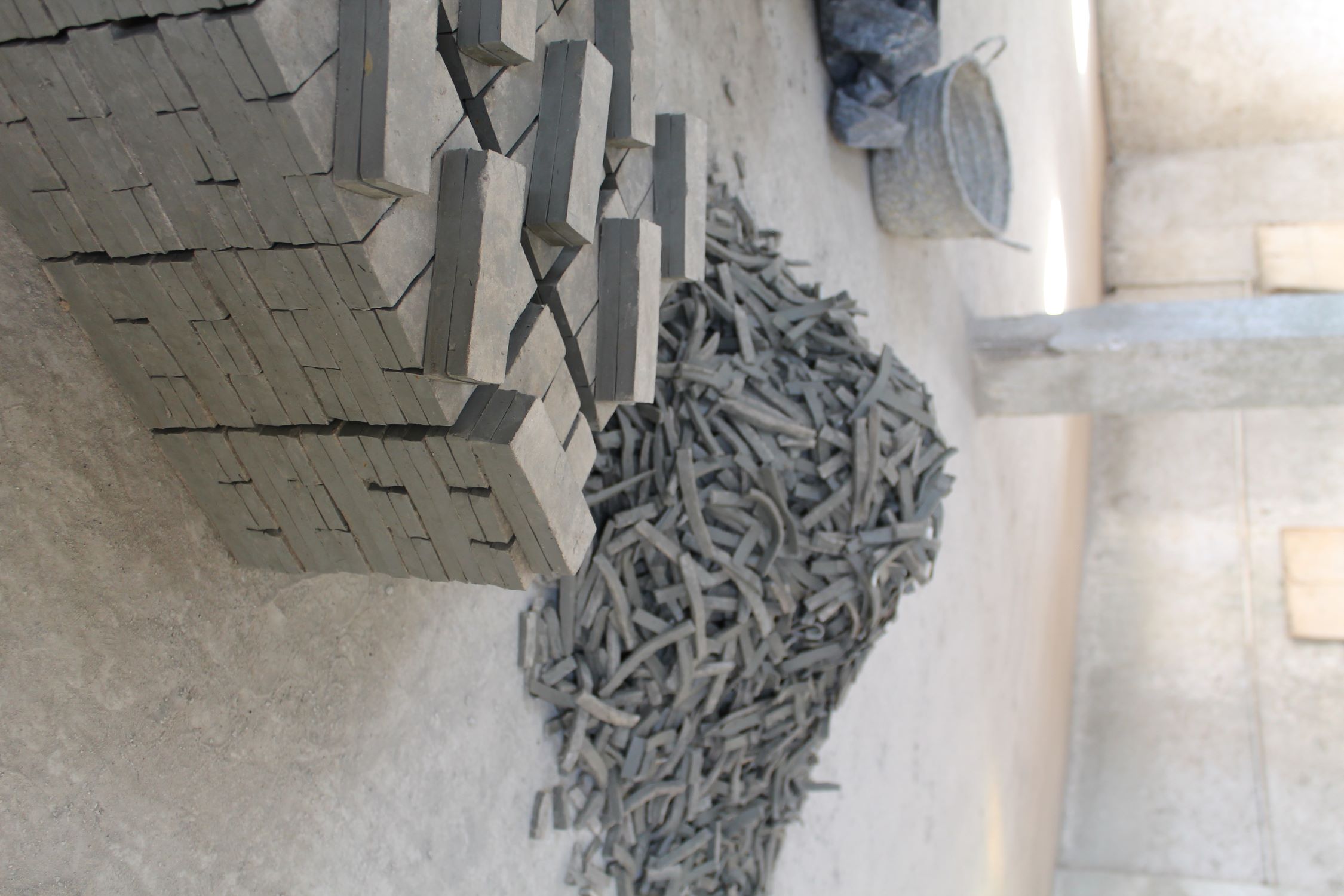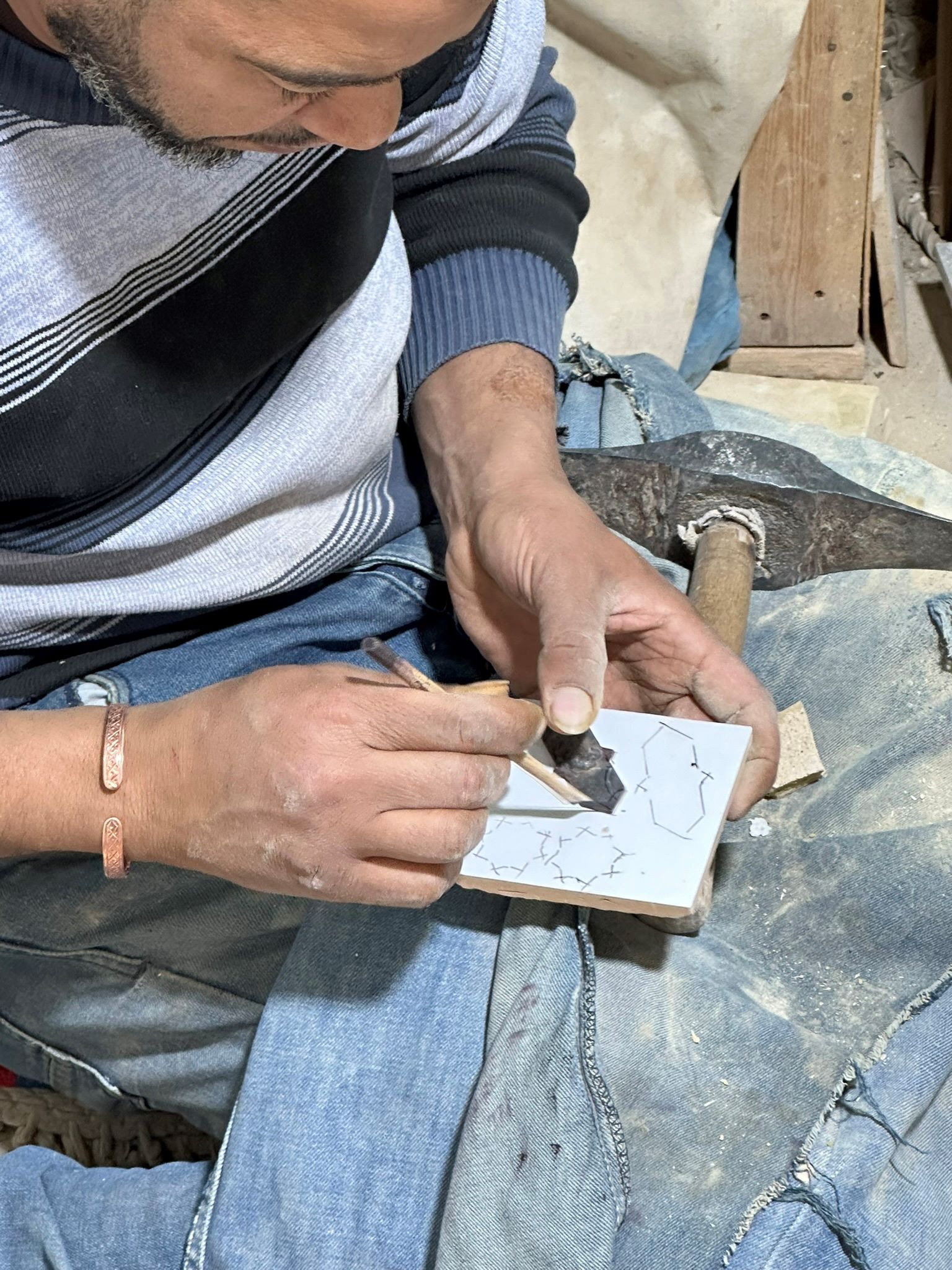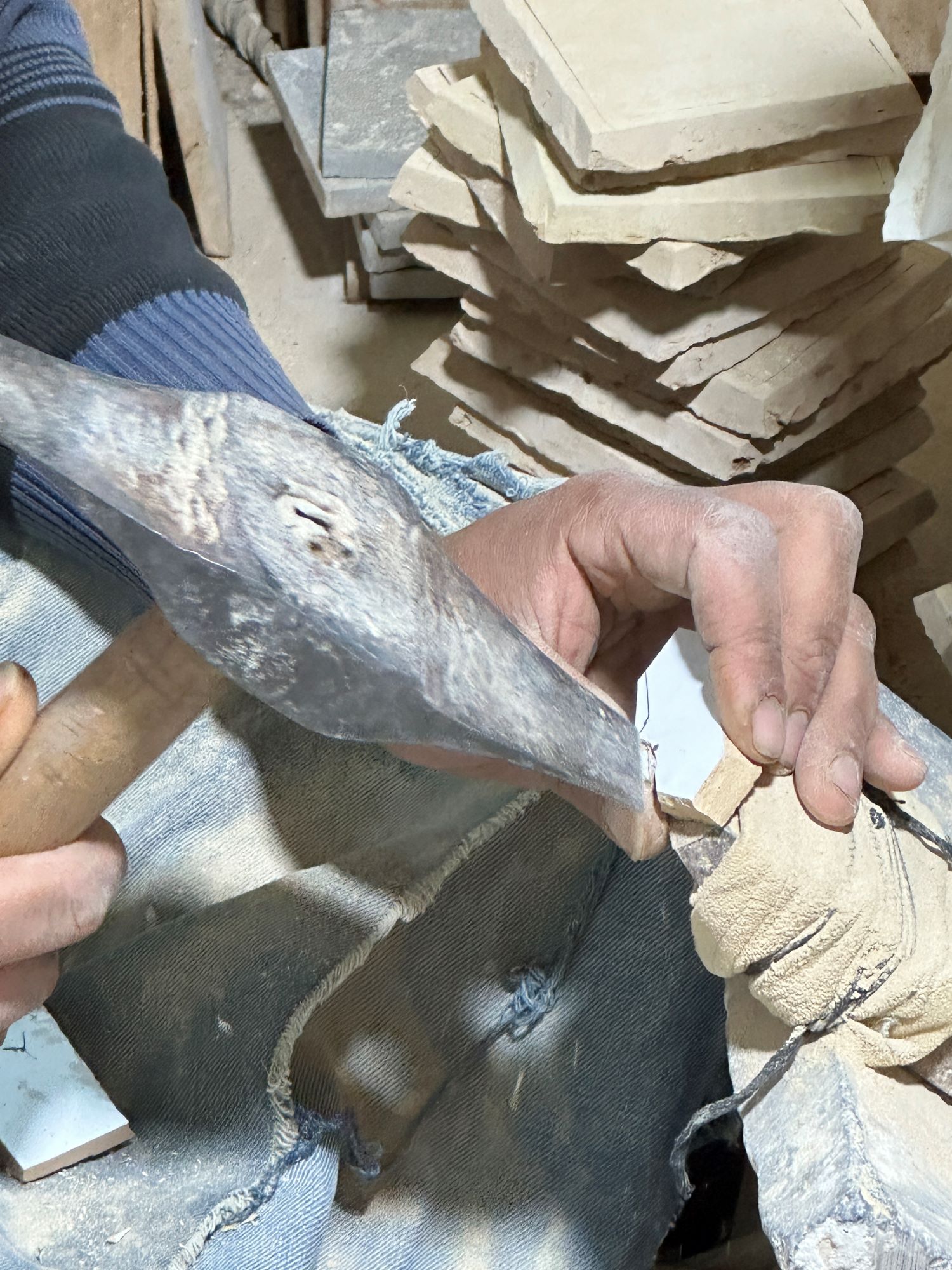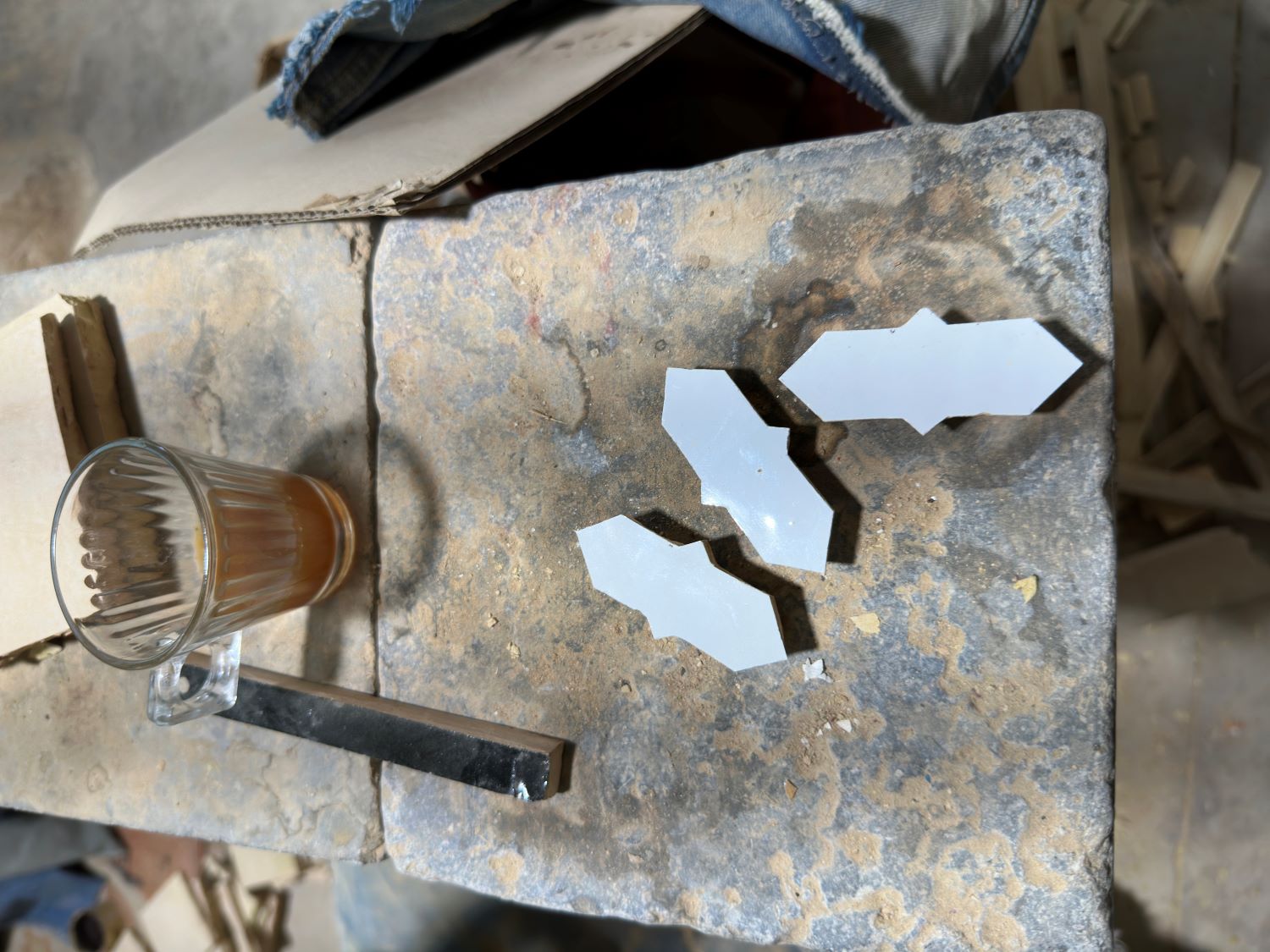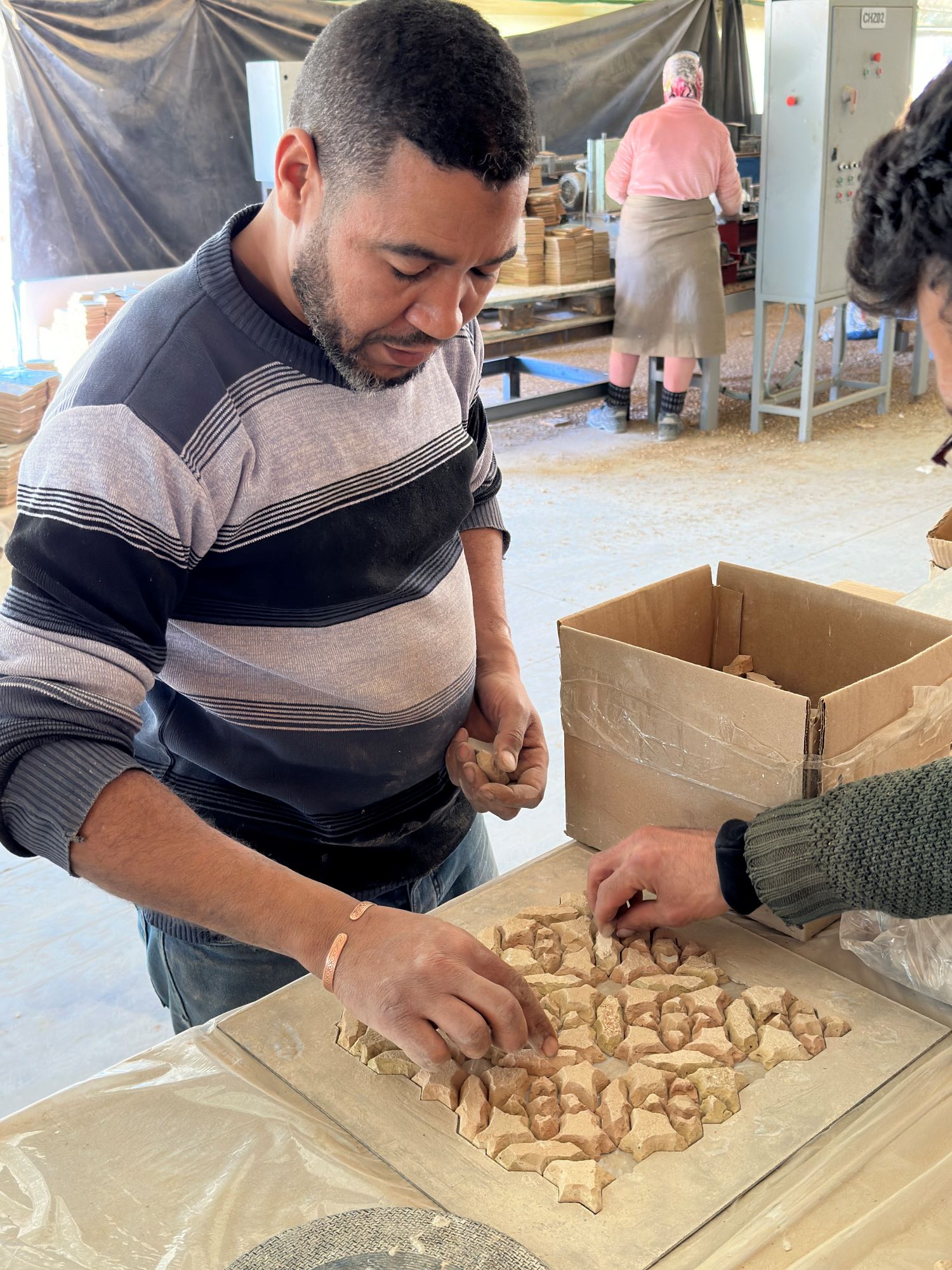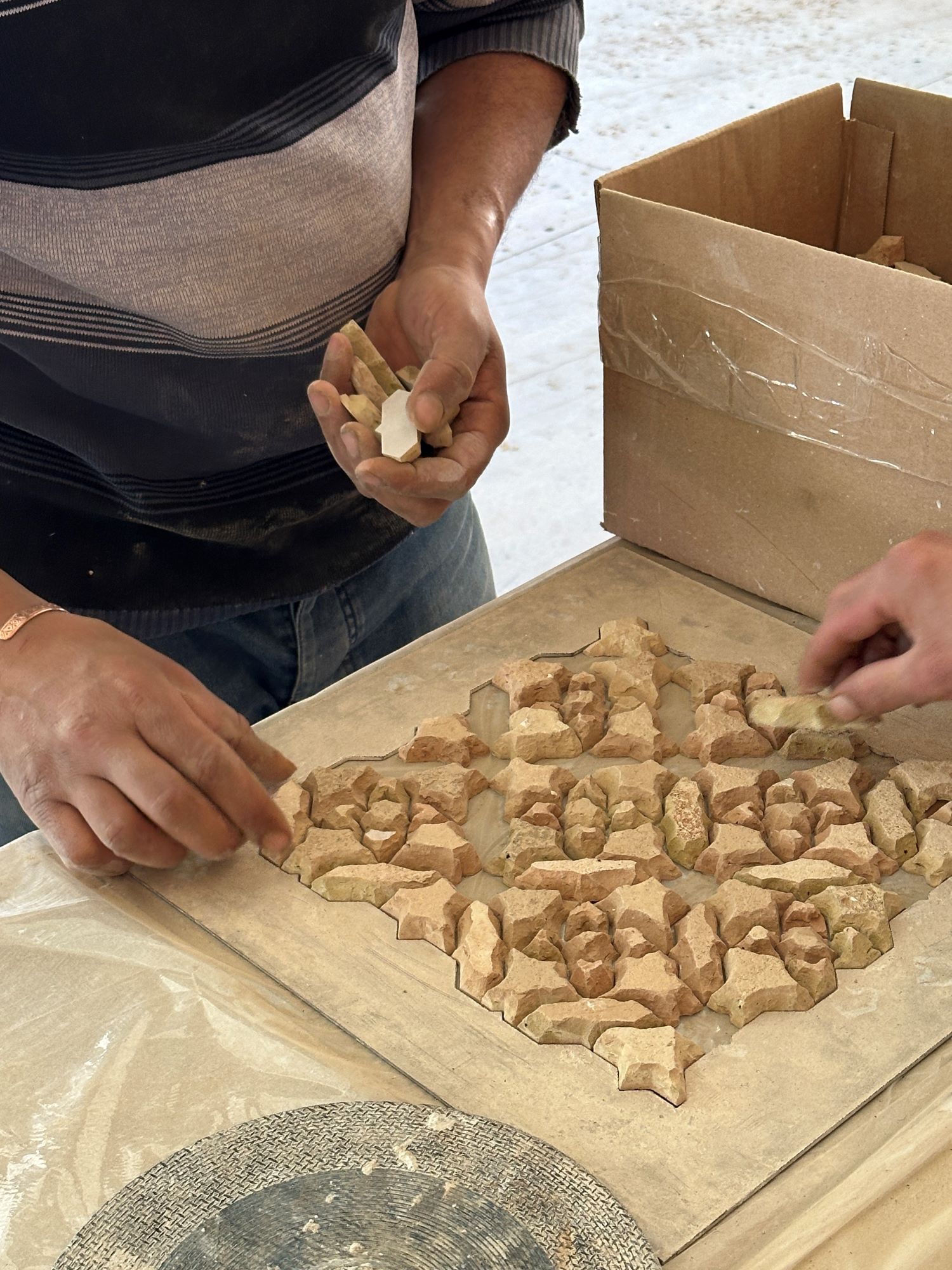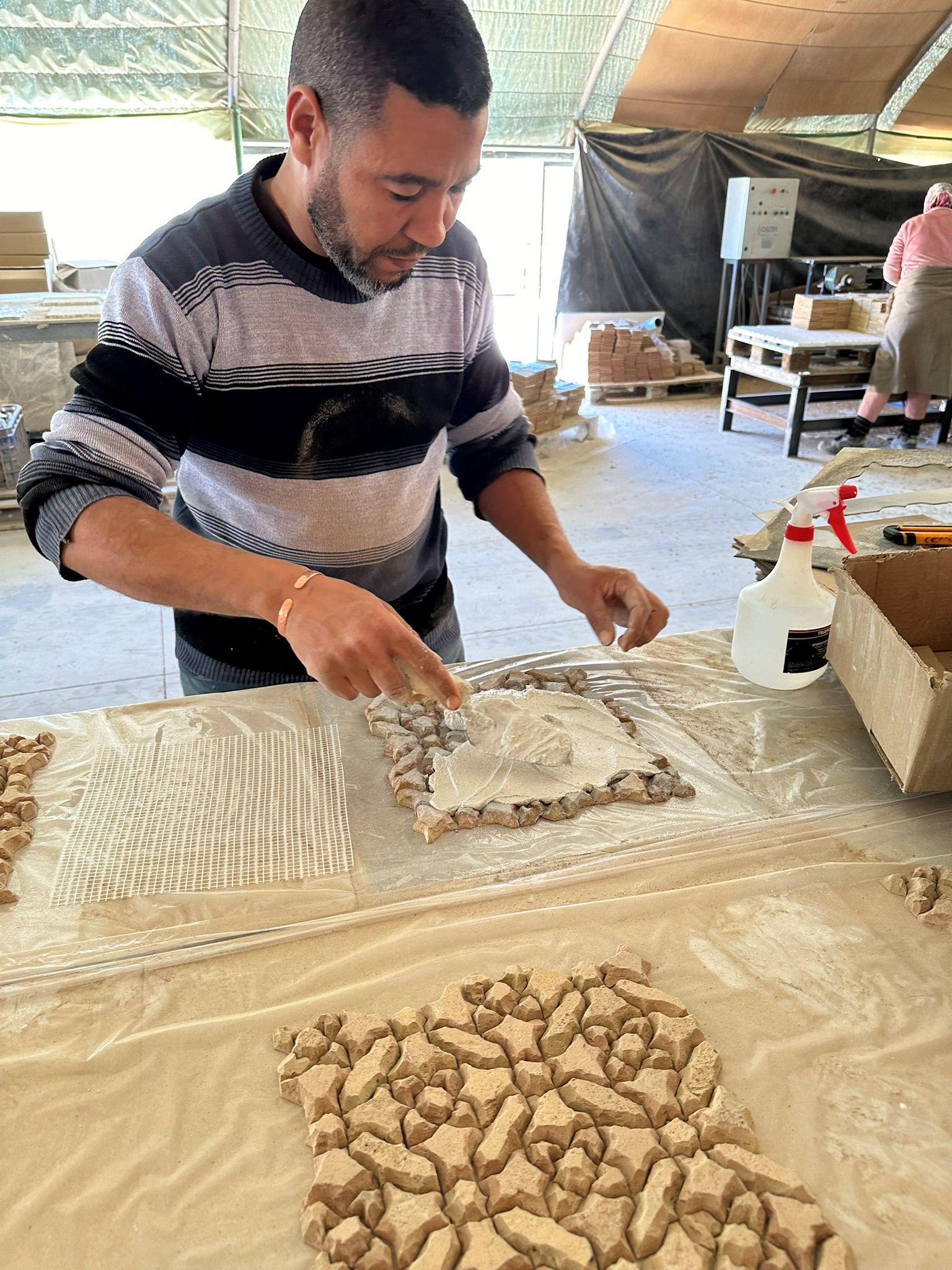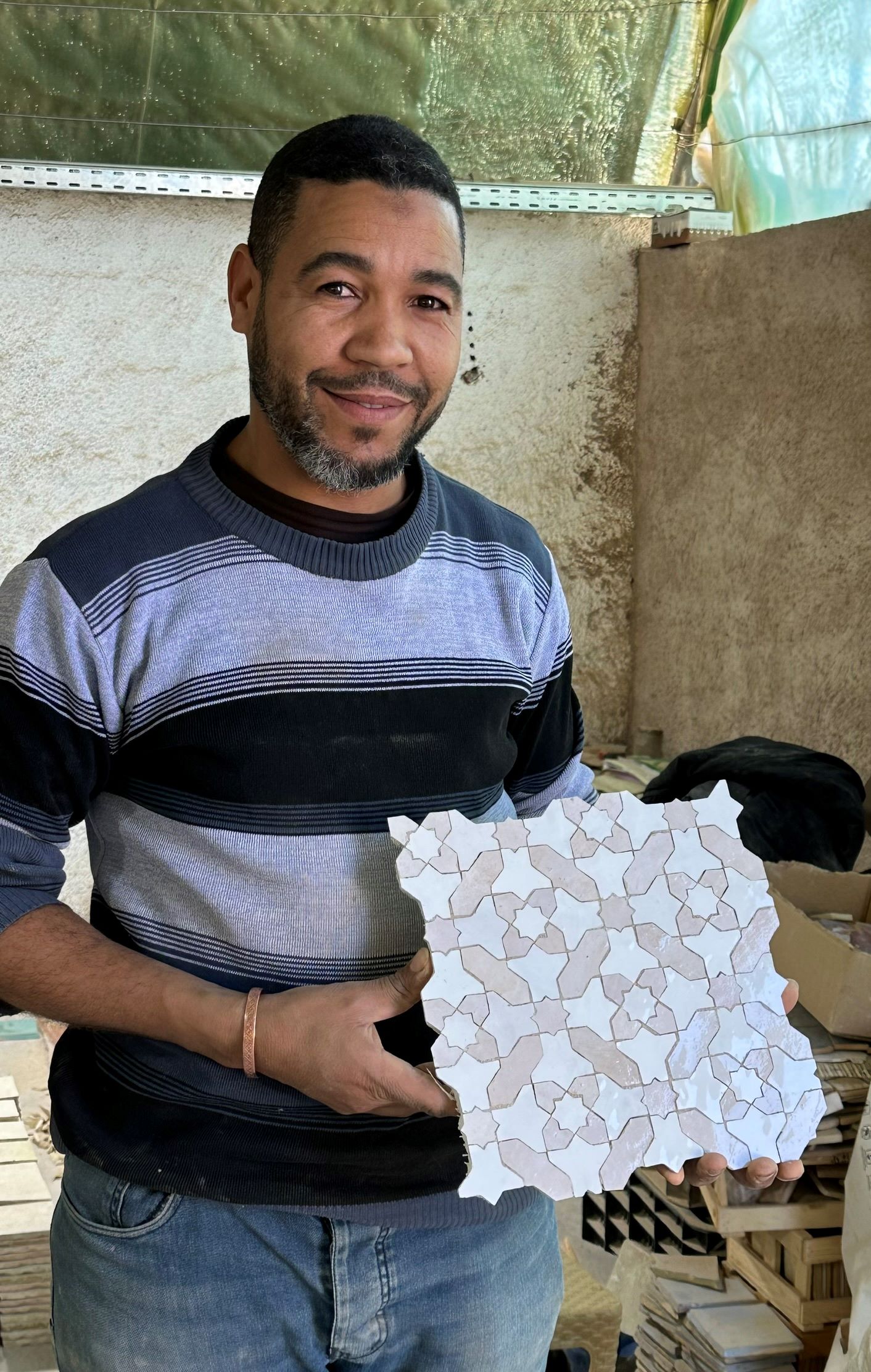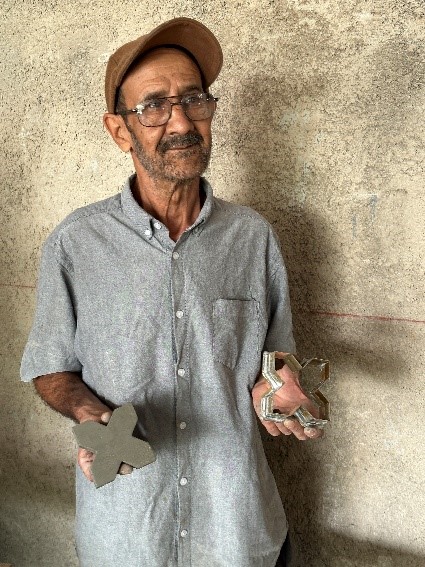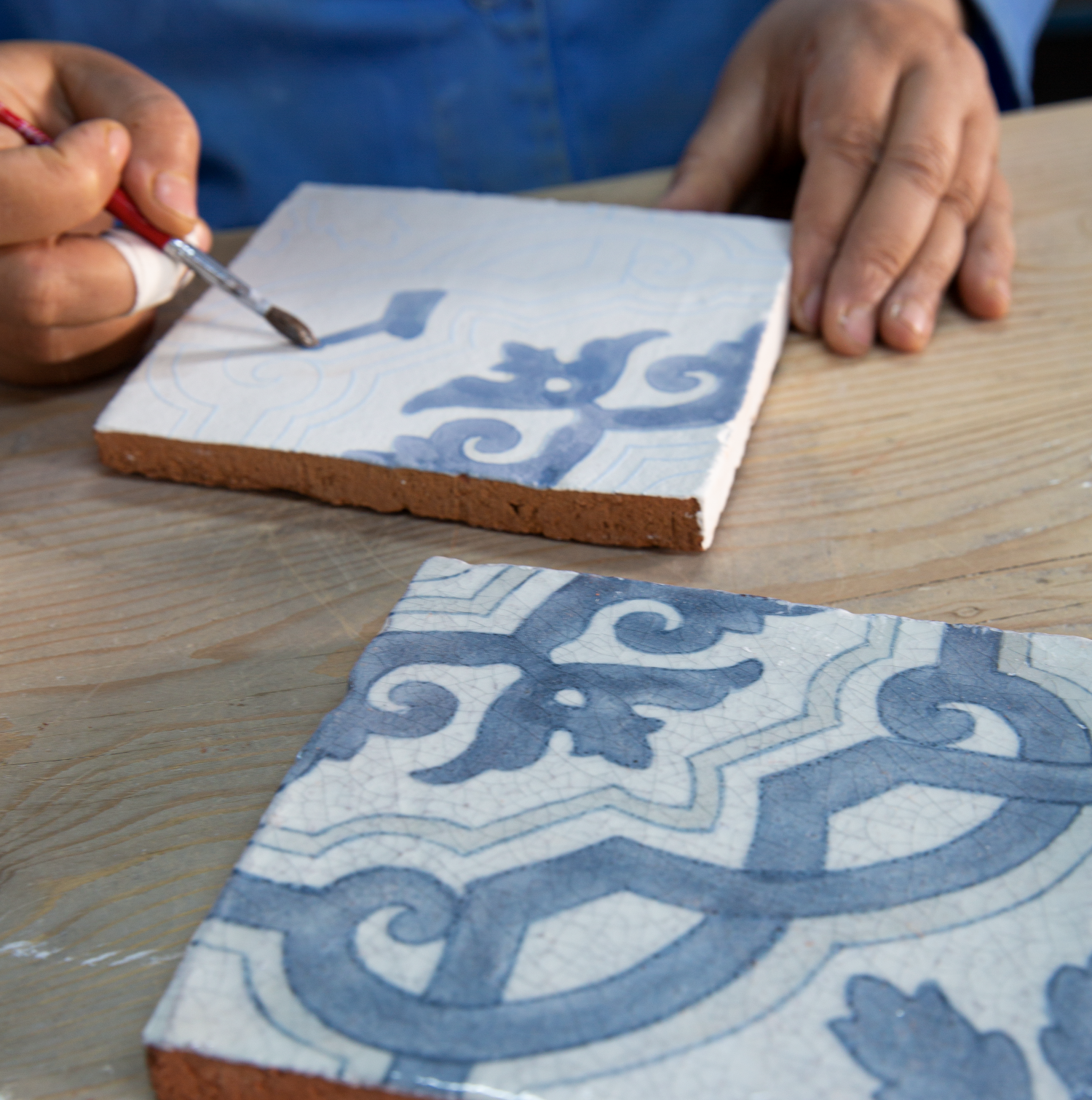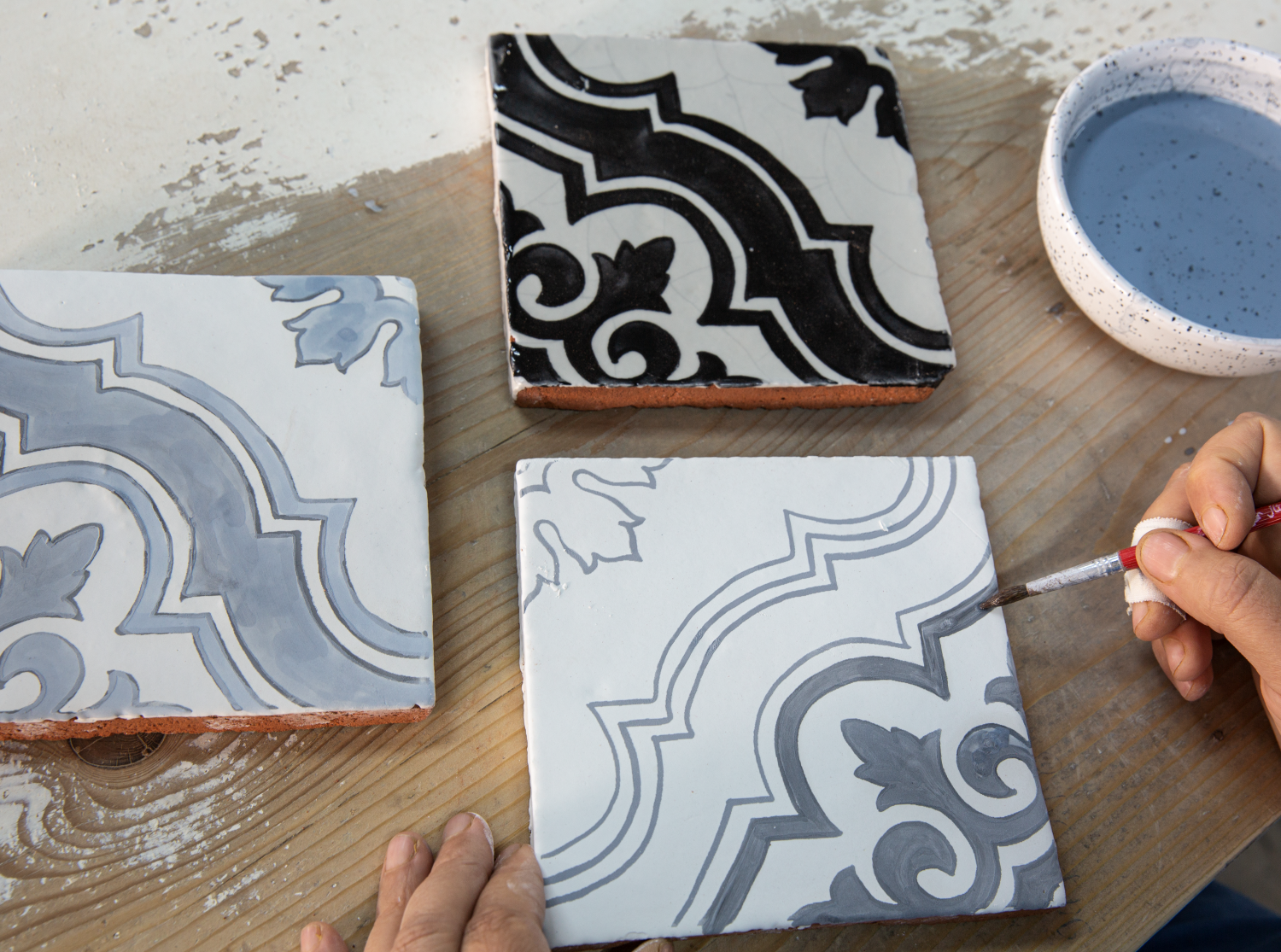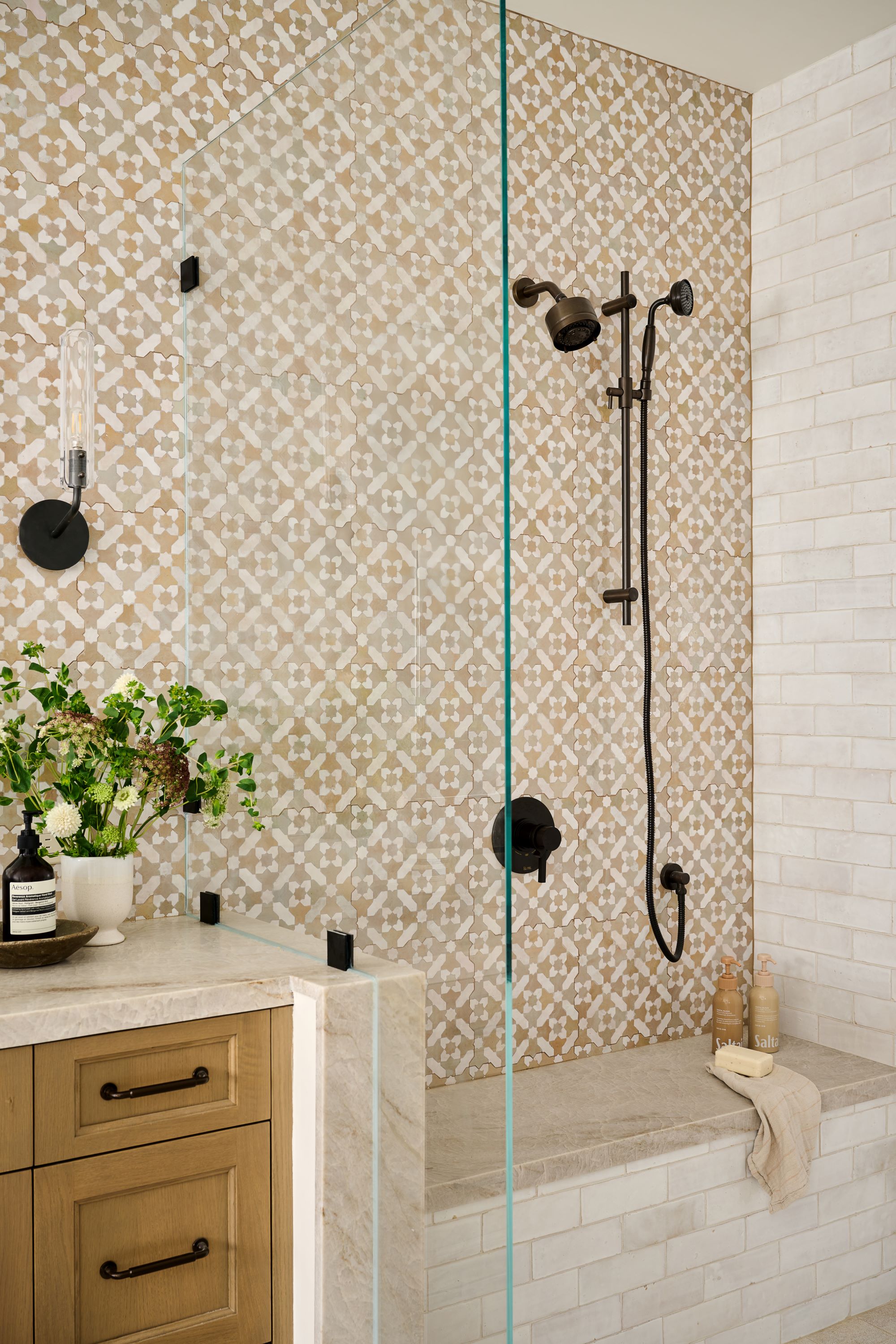Handmade Tile
Many of the collections we carry are made completely by hand, carrying on traditions that are
hundreds of years old. Handmade tiles are uniquely beautiful because each tile is slightly
different; the hand of the artisan creates variations in color and texture that when installed are a
lasting work of art and a testament to the culture that created them.
Zellige - An ancient tilemaking tradition
Zellige is a Moroccan tilemaking tradition dating from the 12 Century, and may be the oldest continuously practice tilemaking tradition in the world. Making tile 100% by hand is a labor and time intensive practice, with each step carefully followed to create the beautiful end product.The Zellige making process starts with dry clay mined from local sources. The dry clay is mixed with water for several days and then manually mixed to the correct plasticity to be worked.
Wet clay is hand pressed one by one into metal forms and then dried outdoors for several days until they are leather hard and safe to be moved.
Zellige - Making the shapes
The dried tile blanks are then hand formed into tiles using a traditional wooden mallet (which is also made by hand from local wood) to pound and compress the clay, removing air pockets. During this process the clay surface is smoothed by hand using a spatula, which gives Zellige tiles their characteristic undulation.The tile blank is then cut to square or rectangular shapes using a metal guide to ensure the tiles are all cut to the same size. The clay remnants from the cutting are recycled back into the raw clay for future use.
Cutting Zellige Patterns
Artisans use traditional metal chisels to cut Zellige tiles into intricate shapes, creating elaborate mosaic patterns like our Habiba design. Before beginning to cut, the artisan traces the shape onto the surface of the Zellige tile to ensure each small mosaic piece is cut to the same size and will fit in the pattern.Cutting the complex small shapes requires amazing dexterity and takes years to perfect. Often a junior artisan will cut the rough shape from the tile, and then a master will take over and finish it. It takes many years of apprenticeship to become a master Zellige artisan.
Mounting Zellige Patterns
Because the chamfer on the back of each small shape makes it impossible to mesh mount the patterns, the mosaic tiles are backed with cement to form a solid piece.This is a multi-step process that begins with the artisan assembling the pattern upside down, laying and fitting each piece one by one. Then glue, mesh and cement are carefully added to the back to create a ridged sheet that can be easily installed.
This is a multi-day process as all elements must dry well before the sheet can be turned over, carefully cleaned and packed. The slight differences in each hand cut piece adds unique beauty to the final product.
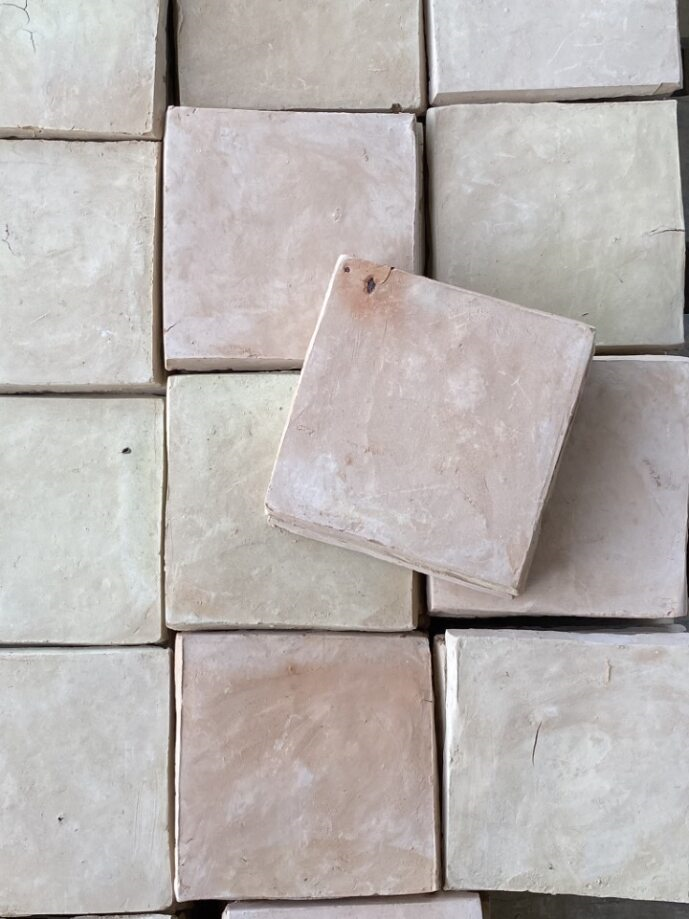
Zellige Tile - What to expect
The beauty of handmade tile cannot be separated from imperfections that come from traditional tilemaking process, which in the case of Zellige has changed little over hundreds of years. When you receive a Zellige shipment, you should expect variations in size, thickness, color and surface.Color can range in value from dark to light but also in hue, a result of hand glazing. Each tile has a different thickness and quantity of glaze on it, which effects the final color. This color variation is distinctive to Zellige tiles and is much sought after.
Tile surface will be uneven, a result of each being hand finished. It can also have imperfections such as dimples, lime pops and small chips on the edges. The uneven surface is what creates the unique reflections that give a Zellige surface a look unique among tiles.
Some folksmight really want Zellige tile but are not happy with some of these characteristics. If this is you, make sure to order 20-30% extra so you can select out the tiles you don’t want to install.
